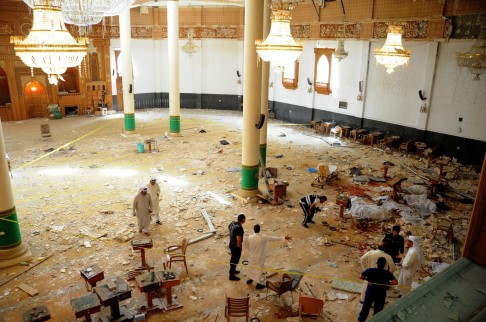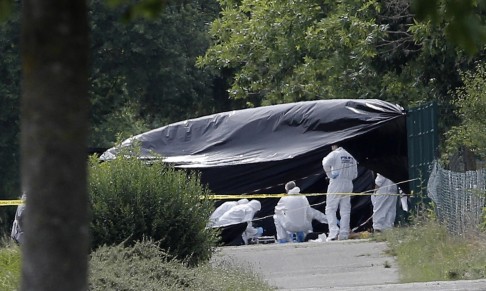
How wave of killings in Tunisia, France and Kuwait echo chilling methods of IS
The targets - Shiite Muslims, French workers and western tourists in Tunisia - and the alleged attackers all share similarities with past strikes
Three different attacks, one overall suspect. The wave of killing yesterday will undoubtedly be attributed to Islamic State (IS), which has already reportedly claimed responsibility for one amongst them, with strong indications of a role in the others.
Each attack hit a different target in a different way, and underlines the varied nature of a constantly evolving threat.
One involved Muslims killing Muslims in the Middle East itself - a bomb in a Shia mosque in Kuwait, a conservative Gulf state with a Sunni Muslim majority. This is part of the horrendous sectarian violence which has increasingly convulsed the region over the last five years and shows no sign of abating.
Outright war against Shiites - seen as apostates by Islamic State - is a core aim of the terrorist organisation which goes back to its origins in Iraq a decade or more ago. This is a reminder that the vast proportion of casualties of terrorism are Muslims killed by co-religionists.

The second targeted western tourists in Tunisia. Hotels and holidaymakers have been a frequent target in recent years. Western tourists are both an obvious and vulnerable presence in the Islamic world. An attack on a hotel will attract global attention, mark a group's influence and badly damage the local tourist industry.
"Tunisia's economy is heavily dependent on tourism and that revenue is now about to all but disappear, leaving Tunisia in dire straits at a critical junction in its political transition," North Africa analyst Geoff Porter said.
Historically such attacks have undermined local support but it seems unlikely yesterday's attackers would be bothered by this. The prime suspects for the Sousse attack are militants belonging to fragmented local groups, possibly based in neighbouring Libya and loyal to IS.
Third was the attack on a US-owned gas cylinder plant in southeast France. The culprit in this strike appears to fit a profile that has become well established in recent years - a French male aged between 22 and 35 who was either born overseas before coming to France or whose parents migrated from Algeria or Morocco.
Some of these attackers have had links to overseas groups; while others have been closer to the classic idea of "lone wolves". But all have been steeped in a broader environment of violent activism, extreme conservatism, homophobia and anti-semitism for many years before they acted. Many have been in prison.

They are "lone actors" only in terms of the actual organisation and execution of a terrorist attack; their world view is shared by a significant number of people. An increasing number have either been inspired by, or actually fought for, Islamic State.
When propagandists of the group tell individuals their duty is to take up arms in European countries - especially against the "filthy French" - they know already how receptive some will be to their call to arms.
It is possible the three strikes were coordinated, which would indicate a new level of strategic thinking and capability for Isis. Even if they were not, they send a potent message. Terrorists hope to give the impression that they can strike at will, everywhere, anywhere. This is clearly not the case.
The attack in Europe involved one man, possibly two, armed with some kind of blade. The one in Tunis, a gunman or two.We are still far from the mass casualty attacks of 10 or 12 years ago in Europe. But the sense of ubiquitous menace induced by the killings, will be difficult to dispel.
